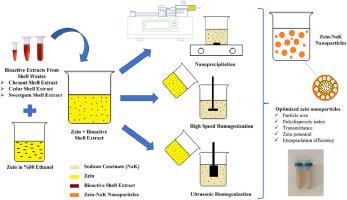Characterization and encapsulation efficiency of zein nanoparticles loaded with chestnut fruit shell, cedar and sweetgum bark extracts
Abstract
Zein nanoparticles (ZNPs) loaded with bioactive extracts of chestnut (Castanea sativa Mill.) shell, cedar (Cedrus libani) and sweetgum (Liquidambar orientalis) bark wastes were produced using different methods. Nanoprecipitation, high-speed homogenization and ultrasonic homogenization allowed the fabrication of ZNPs with particle sizes smaller than 202.40 nm, 430.25 nm and 325.50 nm, respectively. The smallest nanoparticle size was achieved at 132.81 nm for sweetgum bark extract-loaded ZNPs obtained by the nanoprecipitation method. Encapsulation efficiency (EE) was between 34.03 and 96.83% for all zein nanoparticles fabricated under different mixtures and process conditions. Zein concentration and extract ratio played an essential role in the EE of nanoparticles. The best conditions were determined to obtain the desired properties of ZNPs based on particle size, polydispersity index and EE by using a central composite rotatable design. The nanoprecipitation method was more appropriate for producing chestnut and cedar shell/bark extract-loaded nanoparticles. In contrast, the high-speed homogenization method was suitable for producing sweetgum bark extract-loaded nanoparticles. As a result of the encapsulation of various shell/bark extracts within zein nanoparticles, value-added products were generated from wastes having bioactive compounds. The developed zein nanoparticles for each extract type would offer eco-friendly, simple and safe food processing and packaging systems.


 求助内容:
求助内容: 应助结果提醒方式:
应助结果提醒方式:


